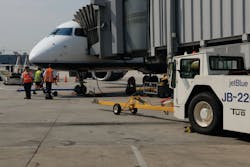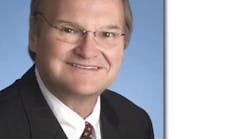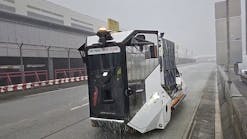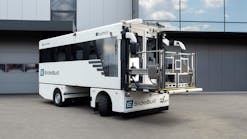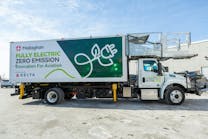Professionalism is not something reserved for airline pilots. Everyone who works around airliners must step up to be a safety professional. That includes gate agents who move a gate walkway up to the aircraft, fuelers, all service personnel, and especially ramp workers who are the last to touch the aircraft before it flies.
Industry personnel must strive to maintain professionalism, take responsibility for personal actions and remain aware of how each individual contributes to the overall safety of a company and air transportation at large. What are a few actions you can take each day?
First of all, you must be fit for duty. While fitness often refers to a physical condition, the real challenge is to ensure a mental fitness for duty. The quality and quantity of sleep is an important means to ensure necessary mental awareness and attitude. FAA website www.mxfatigue is a very good place to review important practical tips about sleep. The basic rule: Get about eight hours of sleep every night. While difficult, sleep duration is critical and is personally nonnegotiable.
While fitness for duty is a personal, professional responsibility, management must also recognize that schedules must be reasonable. A human cannot withstand repeating 12-hour shifts, or split shifts that do not allow for quality rest.
Safety-mined professionals use voluntary reporting systems. No one likes to make an error and then tell everyone about it. However, professionals know they can learn from the error and also help ensure that no one else makes the same mistake. Again, it takes cooperation between company and workforce to ensure a voluntary report of an honest mistake is treated in a just manner.
FAA is currently working with an Airlines For America (formerly known as the Air Transport Association) committee to extend the pilots' Line Operations Safety Audit into the maintenance and ramp workplace. The system will help ground service workers conduct nonthreatening peer-to-peer audits of normal operations. This system will help identify both the good and the suboptimal practices. LOSA will permit companies to predict problems rather than waiting for an event to occur.
Helping others is another trait of professionals. They strive to guide new employees who may not be familiar with a new aircraft or procedure. The person being mentored demonstrates professionalism by learning and, ultimately, teaching a new co-worker. It is a two-way street.
Professionals follow procedures. They take personal responsibility to follow the principles and practices of the manufacturer or the company manuals. "Failure to follow procedures" is the most common cause of personal injury and aircraft ground damage.
"Safety Culture" is a popular term in aviation safety circles. In a safety culture, management and workers recognize safety is critical to meet the passengers' expectations and ensure the success of a company and the longevity of everyone's job. In a safety culture, each employee knows his/her specific actions ensure continued safety. Every individual working within a safety culture is a professional.
About the author: Dr. William Johnson is FAA chief scientific and technical advisor for human factors in aircraft maintenance systems.
